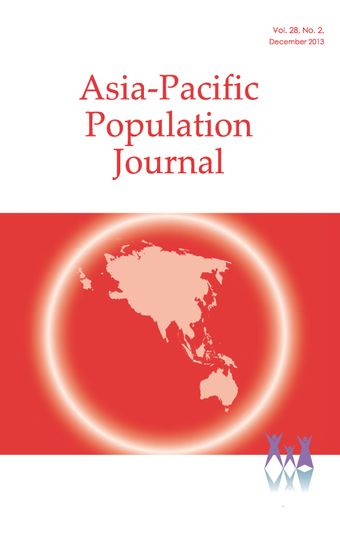-
Abstracts
- Source: Asia-Pacific Population Journal, Volume 28, Issue 2, Aug 2014, p. 1 - 3
-
- 26 Aug 2014
- Previous Article
- Table of Contents
- Next Article
Abstract
The impact of marriage, contraception, induced abortion and postpartum infecundability on fertility decline in Viet Nam between 1997 and 2002 are examined in the present paper. The authors use a Bongaarts model to determine the contribution of each factor to fertility changes in Viet Nam, based on data obtained from the 1997 and 2002 rounds of the Viet Nam Demographic and Health Survey. The authors show that there are significant differences between rural and urban areas. The study reveals that in urban areas, the decline in fertility can be attributed mainly to delayed marriage, an increase in induced abortion and increased postpartum infecundability, while the contribution of the increased use of contraceptives is negligible. In rural areas, the decreasing proportion of married women, contraceptive use and induced abortion are the main factors responsible for the decline in fertility. The authors also find that the high incidence of induced abortions can largely be attributed to limited use of modern contraceptive methods.
© United Nations





